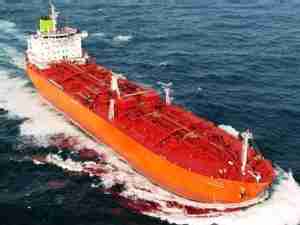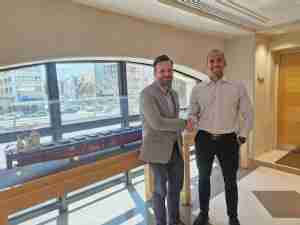 Port of Vancouver Executive Director Larry Paulson is a man on a mission. And that mission is jobs!
Port of Vancouver Executive Director Larry Paulson is a man on a mission. And that mission is jobs!
Providing new opportunities for local employment, and the economic benefits that stem from those jobs, was the theme repeated throughout Paulson's annual Port Re:Port presentation made before 300 community members in the waterfront ballroom at the Red Lion Hotel at the Quay.
'Our role in this community is clear ' to create jobs,' Paulson said. 'At the Port, we believe that we can create enough family-wage jobs to form a defining moment for our community.'
Paulson asked his audience to imagine a time when thousands more Clark County residents can work close to home ' not driving to jobs across the I-5 bridge. 'We believe that time is NOW!' he said.
Port commissioners and staff hope to locate those jobs on over 800 acres of property adjacent to their current operations in the Vancouver lowlands. Earlier this month the Port signed letters of intent to purchase the 218-acre site that previously housed the Alcoa, and then Vanalco, aluminum smelter. The site could provide nearly 1,900 direct jobs and have a ripple effect that generates another 2,700 jobs in our community, according to projections by a national economic consultant. The commission voted to implement its final option for an Industrial Development District tax levy to raise funds for the $48.25 million purchase and improvements.
Investing in Jobs for the Future
'This investment will have returns in the near future, and returns for our children and grandchildren down the line,' said Paulson.
More jobs will come from development of 108 acres of light industrial-zoned property, on the north side of Lower River Road, between Vancouver Lake and Fruit Valley, and the long-awaited development of Columbia Gateway, a 534-acre parcel of Port property south of the Vancouver Lake flushing channel. Development of Columbia Gateway for marine and industrial operations is finally close to fruition, according to Paulson. The Port expects to complete a draft environmental impact statement for the property this spring.
The Port has also begun work on a rail project that will construct a new access line onto port property from the BNSF east-west mainline. This project creates additional rail capacity for existing tenants to grow their current operations and for future developments at Alcoa/Evergreen and Columbia Gateway, said Paulson.
It is also essential to increasing the efficiency of the nation's mainline rail network that intersects in Vancouver. With this improvement, rail will be 40% less congested in this area in 2025 than it is today ' even with expected growth, according to rail simulation studies. The $60-$70 million cost for the project will be funded by a combination of Port revenues and bonds, federal and state appropriations, and contributions from private industry partners.
Marine Cargo Posts Record, Again
To make his case for the expanded property and rail developments, Paulson noted that the Port of Vancouver has posted record volumes of cargo at local docks for a third consecutive year. Highlights for 2006 included:
- Overall tonnage of 5.2 million, a 30.5% increase over 2005.
- 50% increase in steel imports.
- Purchase of the Port's $3.2 million heavy lift crane, the largest mobile harbor crane in North America.
- 64% increase in wind turbine cargo and a three-year contract for future wind energy business that has already generated a 300% increase in projects for 2007.
- $17 million in marine revenues, up 16% from 2005.
Port Tenant Businesses Provide Jobs
The Port's industrial tenant roster grew to 50 companies in 2006, filling 95% of available property and facilities. The purchase of Cadet Manufacturing earlier this year will ensure a speedy, thorough cleanup of historical TCE contamination on that property, Port Commission










